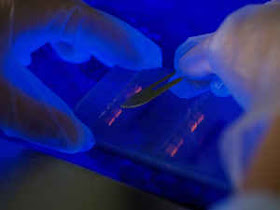June 2012
THE MEDIA DEBACLE AROUND THE ROTHAMSTED GM WHEAT PICNIC-PROTEST - June 2012) led to a final
summing-up article in the Guardian.
Like the GM-concern groups, the
Guardian noted that, in contrast to past years, the media reporting
and comment have been “mostly neutral and positive about the
experiments, or actively hostile to the protester” and that the
scientists involved have “adopted a new tactic”. It, too, asked
“What has changed?”
To illustrate the new “reason and
openness”, the author described how keen the scientists had been to
'point out' that “the risk of pollen from their wheat reaching
surrounding crops is vanishingly small because the crop is
self-fertilising”. Thus, the logic continued, the urgency claimed
by the protesters to stop an open-air GM trial because it could have
profound effects on the environment “simply did not exist”.
Is this true?

